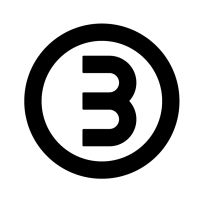In the intricate world of logo design, the dynamic interplay between human creativity and artificial intelligence (AI) is an ongoing exploration. Recently, I undertook an adventurous project to understand this interaction better, employing an AI tool named 'Midjourney' in my design process. The following stages outline this exploration:
1. Introducing AI into the Design Process
Starting with the ideation phase, I used Midjourney to generate 3D objects that set the groundwork for the logo design. The final logo emerged as a 2D entity, but the use of these 3D references sparked new ideas and perspectives, proving that AI can be an effective tool in the early stages of design.
2. Experimentation: The Key to Uniqueness
I manipulated different prompts and parameters with Midjourney, creating a multitude of variations. This method revealed that the effective use of AI in logo design requires continual adjustment and experimentation.
3. The Power of Language in Design
I incorporated haikus into the design prompts, generated by ChatGPT. These haikus became a poetic tool that injected deeper meaning into the design process and proved to be a unique approach to design ideation.
4. Decision-making: The Human Touch in the Process
From hundreds of images, I marked the ones that piqued my interest, and the client then selected their top three designs. This highlighted the critical role of human judgment, despite AI's assistance.
5. The Final Design: From 3D to 2D
The final stage saw me manually transition the chosen 3D design into a 2D logo in Adobe Illustrator. Although AI could generate a design, human skill, experience and love of bézier curves crafted it into something actually usable as a logo.
6. AI's Contribution: A New Perspective on Time Efficiency
While Midjourney might not have saved significant time, its value lay in stimulating the idea generation and sketching process. In this regard, AI can be a potent ally.
7. Understanding AI's Role in Different Scenarios
The journey illuminated that AI's effectiveness depends on the design goal. For some, it might provide a final logo quicker, while for others, it could be an invaluable tool for starting points.
8. The Human Touch: Unreplaceable in Logo Design
The experiment underscored that nothing replaces human creativity in crafting a unique, well-thought-out logo. The best logo designers create logos that are distinctive, versatile, and conceptually strong.
In conclusion, integrating AI into the logo design process proved enlightening. While Midjourney may not have cut my logo design process in half, as I so hopefully wished, the final logo turned out to be a simple solid mark, as Paul Rand once said, "a by-product of a good idea and modest expectations." This dynamic relationship between technology and creativity forms the cornerstone of modern design, capable of yielding fantastic results. It's not the greatest logo I've ever created, but it's a testament to the powerful blend of creativity and technology in action.
